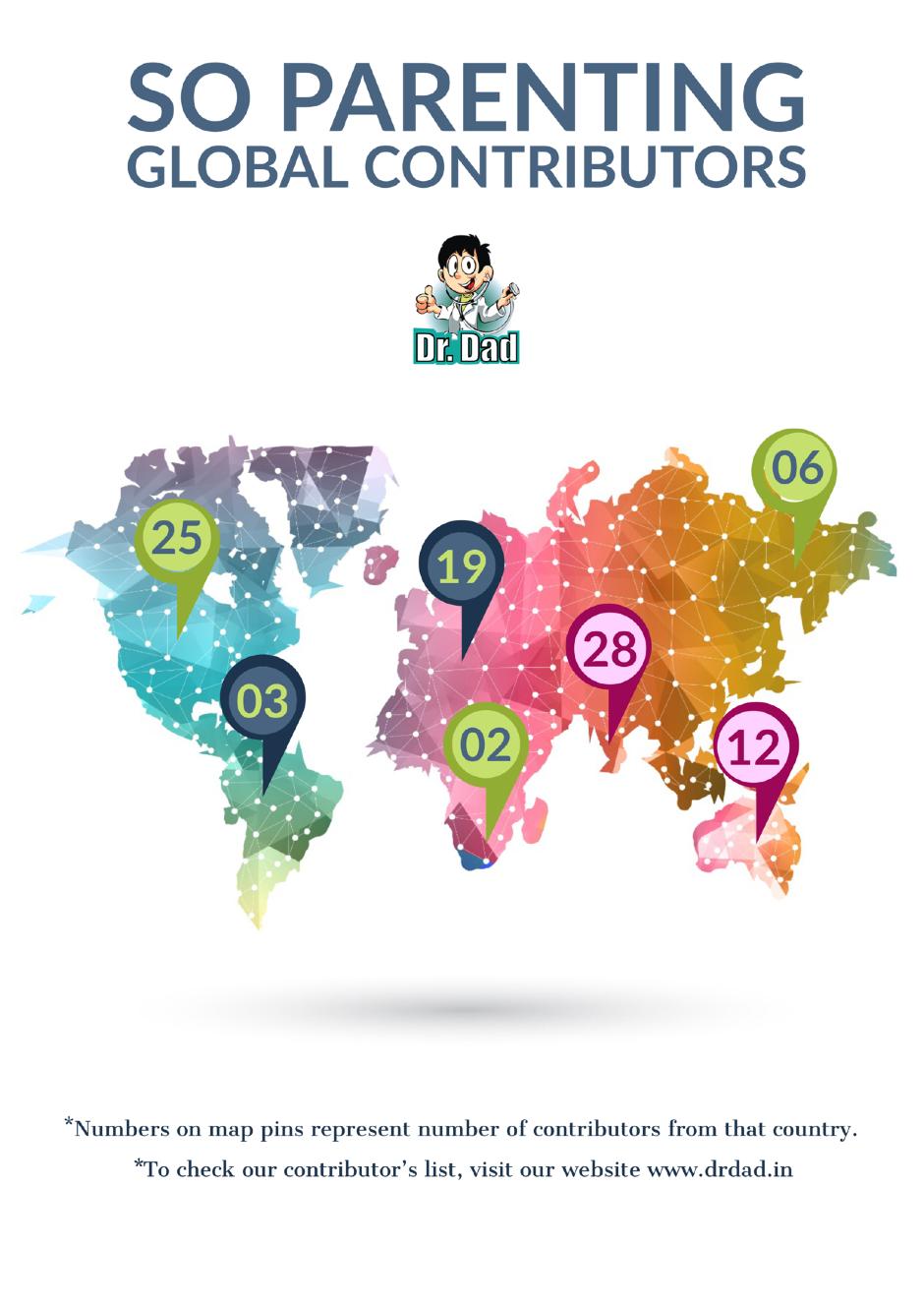













I encourage you to sit down with your kids and, together, pick maybe one or two goals they want to set as their New Year's resolutions. If it's too overwhelming to think of them as resolutions, then just talk about them as goals and make it fun.
• I will try to eat two servings of fruit and two servings of vegetables every day. I will drink sodas or fruit drinks only at special times.
• I will do my best to take care of my body through fun physical activity and eating the right types and amounts of foods.
• When I have some down time for media, I will try to choose educational, high-quality non-violent TV shows and video games that I enjoy. I will spend only one to two hours each day —at the most—on these activities. I promise to respect out household rules for video-games and internet use.
• I will try to get 8 to 10 hours of sleep that my body needs each night.
• I will do what I can to help out in my community. I will give some of my time to help others, working with community groups or others that help
people in need. These activities will make me feel better about myself and my community.
• When I feel angry stressed out, I will take a break and find helpful ways to deal with the stress, such as exercising, reading, writing in a journal or talking about my problem with a parent or friend.
• When faced with a difficult decision, I will talk about my choices with an adult I can trust.
• When I notice my friends are struggling, being bullied or making risky choices, I will look for a trusted adult so that we can attempt to find a way to help.
• I will be careful about whom I choose to date. I will treat the other person with respect and not force them to do something they do not want to do. I will not use violence. I will expect to be treated the same way in return.
• I will resist peer pressure to try drugs, alcohol or smoking or vaping.
• I agree not to use a cell phone or text message while driving and to always use a seat belt.

The first year with your newborn is a bag full of emotions - love, smiles, cries, fear, and uncertainties to name a few! There is no guide, no book, and no expert who can fully prepare you for what's to come. In fact, many second-time parents also share that their experience the second time around was totally different. While there may be a lot of times when you will have to react or respond on the spot, all parents agree that there are 9 things that every new parent undergoes in the first year.
Let's see what these are:-
1) One time you will feel in control and the next you will be everywhere - and this is absolutely normal.
2) Your postpartum body may be weak and wobbly and that's the case with all new moms
3) You will fi how your baby is different from others
4) Things will not be easy! First-year is tough, maybe the toughest
5) The sooner you learn to sort of disregard and not take every single comment on your child seriously, the better it is. If someone tells you he isn't feeding enough, he is weak, just ignore him. Only your pediatrician should be giving you this feedback, no one else
6) Stretch and walk whenever possible. This is the best time to allow your body to open up as
long hours of sitting and feeding the baby can take a toll on your back
7) You will need help! It's ok to ask your parents, your friends, and your neighbours for help!
8) The poop will worry you! Yes, every new parent has had moments when they feel something is wrong with the poop
9) Crying doesn't always mean the baby is hungry or has soiled the diaper. You will find your way with time...

Tips for a healthy pregnancy are important because
Some reasons why tips for a healthy pregnancy are important to include:

1. Prenatal care: Regular check-ups and prenatal screenings are important for monitoring the growth and development of the baby and for detecting any potential problems early. By following tips for a healthy pregnancy, expectant mothers can increase their chances of having a healthy baby.
Nutrition: A well-balanced diet with plenty of fruits, vegetables, whole grains, and lean protein can provide the essential nutrients that a growing baby needs. This can help to ciencies that can lead to birth defects and other health problems.
Exercise: Regular exercise can help to maintain a healthy weight, prevent gestational diabetes, and increase energy levels during pregnancy.
Stress management: Stress can affect the mother's overall health and well-being, and the baby's development, by following tips for a healthy pregnancy, mothers can learn how to manage stress through relaxation techniques such as yoga or meditation.
Reduction of risks: By following tips for a healthy pregnancy, mothers can reduce the risk of complications such as preterm labor, gestational diabetes, and high blood
Emotional support: Pregnancy can be an emotional and stressful time, following tips for a healthy pregnancy can help mothers to manage the emotional and psychological aspects of pregnancy, allowing them to enjoy
Postpartum recovery: Following tips for a healthy pregnancy can help to prepare expectant mothers for a smoother postpartum recovery period, providing them with the tools they need to take care of themselves and their baby after birth.

Baked chicken breast with vegetables is a healthy and delicious meal that is easy to prepare. Here's a recipe that you can try at home:
Ingredients:
• 4 boneless, skinless chicken breasts
• Salt and pepper, to taste
• 1 tablespoon olive oil
• 2 cloves of garlic, minced
• 1 teaspoon dried thyme
• 1 teaspoon dried oregano
3. In a large skillet over medium heat, add olive oil and sauté the garlic for about 30 seconds.
4. Add the thyme, oregano, paprika and cayenne pepper (if using) and stir to combine.
5. Add the onion, bell peppers, carrots, and cherry tomatoes to the skillet and stir.
6. Pour the chicken broth and balsamic vinegar into the skillet, and stir to combine.
7. Transfer the skillet to the oven and bake for 20-25 minutes, or until the chicken is cooked through.
8. Remove the skillet from the oven and let it cool for a few minutes.


C-section, also known as a cesarean delivery, is a surgical procedure in which a baby is delivered through an incision in the mother's abdomen and uterus. While it is a safe and common procedure, recovery can take longer than a vaginal birth and it's important for new mothers to take proper care of themselves post-surgery. One aspect of recovery that is often discussed is exercise.
Here are some things to consider when starting an exercise program after a c-section:
1. Wait for clearance from your healthcare provider: Before starting any exercise regimen, it's important to wait for clearance from your healthcare provider. This will typically happen at your 6-week postpartum check-up, but may be earlier or later depending on your individual recovery.
2. Start slowly: Once you have clearance to exercise, it's important to start slowly and gradually increase intensity and duration. This will help prevent injury and allow your body to adjust to the demands of exercise.
3. Focus on core and pelvic After a C-section, it's important to focus on exercises that will help strengthen the core and pelvic support the abdominal muscles and aid in recovery. Some exercises that can be done include pelvic tilts, bridges, and Kegel exercises.

4. Avoid high-impact exercises: Highimpact exercises such as running or jumping should be avoided for at least the first 6-8 weeks after a C-section. These activities can put unnecessary stress on the abdominal muscles and delay recovery.
5. Listen to your body: It's important to listen to your body and not push yourself too hard. If you experience pain, discomfort or heavy bleeding, it's important to stop exercising and consult your healthcare provider.
Gradually increase intensity and begin to heal and more comfortable, you can gradually increase the intensity and duration of your exercise routine. It's important to continue to focus on core and pelvic oor exercises and to be patient with your body as it continues to
Remember to include rest and relaxation: While exercise is important for recovery, it's also important to include rest and relaxation in your post-surgery routine. This will help your body heal and reduce the risk of injury or complications.
In summary, exercising after a C-section is an important aspect of recovery, but it's important to wait for clearance from your healthcare provider, start slowly, focus on core and pelvic floor exercises, avoid high-impact exercises, listen to your body, gradually increase intensity and duration, and remember to include rest and relaxation. It's always important to communicate with your healthcare provider and follow their instructions.
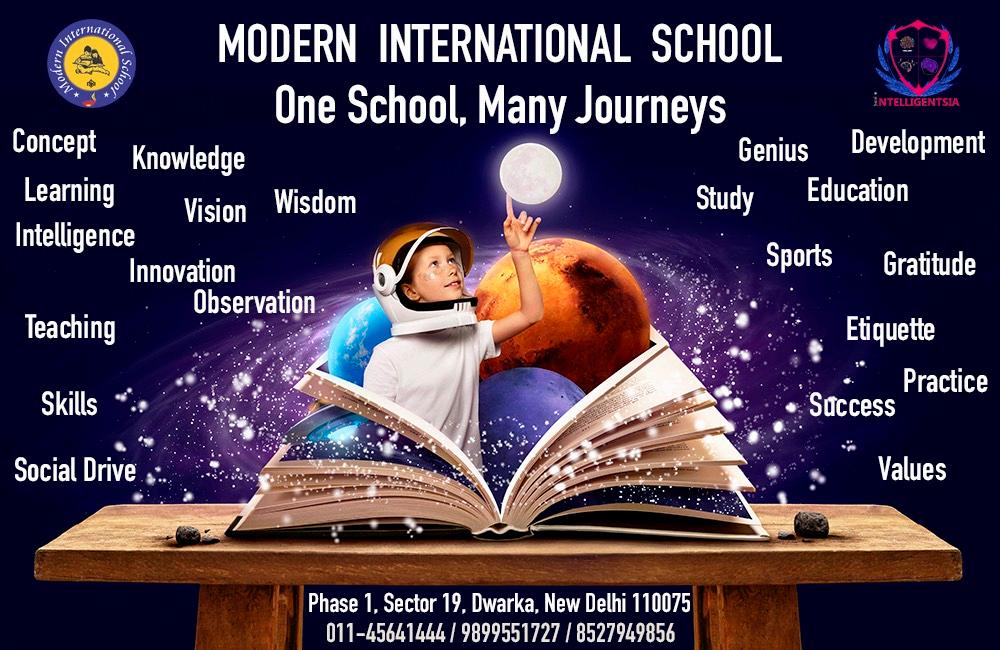



We have listed this location on the basis of survey and we suggest you to follow safety guideline while planning your travels. Images has been taken from internet.


In vitro fertilization (IVF) is a medical procedure that helps individuals and couples who are struggling with infertility to have a child. It involves retrieving eggs from a woman's ovaries and fertilizing them with sperm in a laboratory setting and then transferring the resulting embryo(s) back into the woman's uterus. IVF is a complex and emotionally challenging process, but it can be a lifesaving option for people
It can help individuals and couples who have undergone cancer treatment to have a child. Cancer treatments, such as chemotherapy and radiation, can damage the reproductive system and cause fertility problems. IVF can help individuals and couples who have undergone cancer treatment to preserve their fertility and have a child.
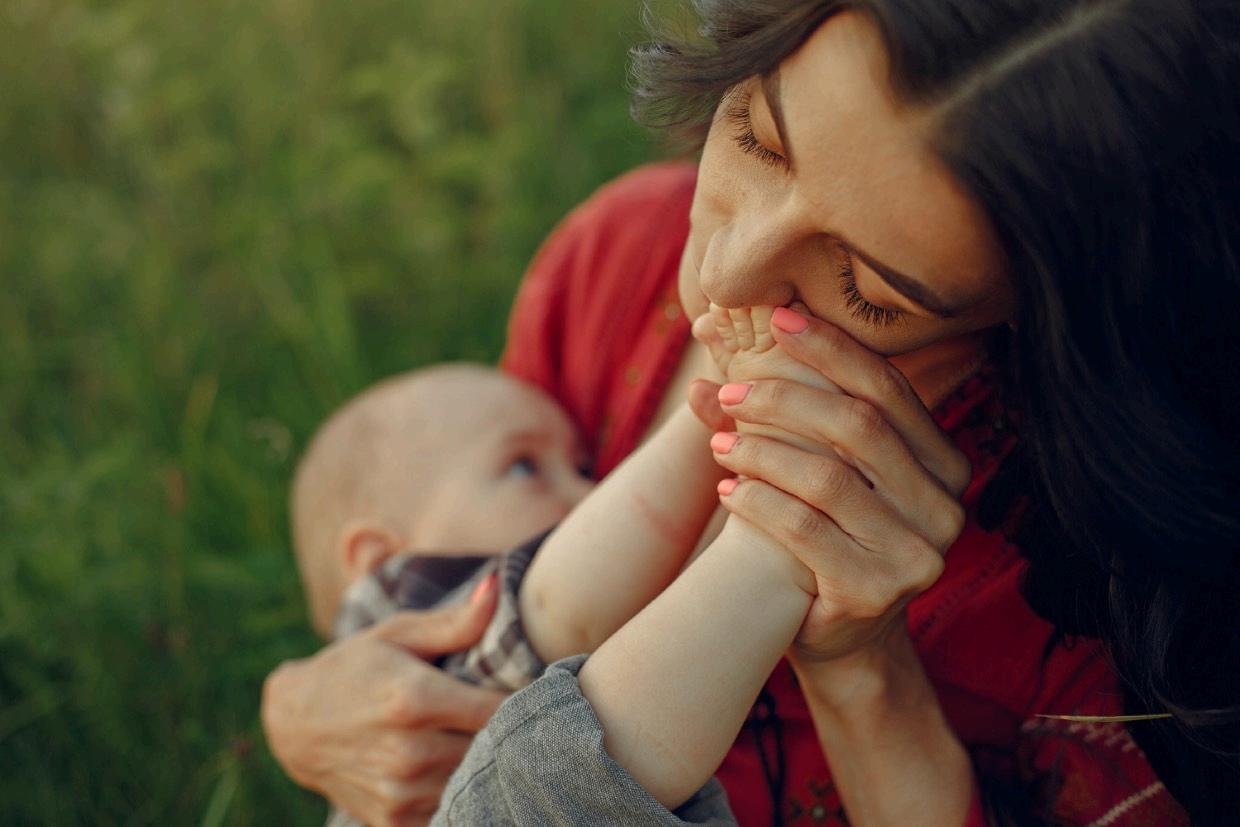
It can help individuals and couples who are struggling with infertility to have a child. Infertility can be caused by a variety of factors, including hormonal imbalances, age, and structural problems in the reproductive system. IVF can help bypass these challenges and give individuals and couples the opportunity to have a child.
This can help individuals and couples who are carriers of genetic disorders to have healthy children.
It can help individuals and couples who are in samesex relationships to have a child. IVF can be used to help individuals and couples in same-sex relationships to have a child using a surrogate or a gestational carrier.
IVF is a complex and emotionally challenging process, and it is not always successful. It can also be expensive and may not be covered by insurance. It is important for individuals and couples to carefully consider their options and to seek the support of a healthcare team and mental health professionals if needed.

In conclusion, IVF is a medical procedure that can be helpful for individuals and couples facing fertility
challenges. It can give individuals and couples the opportunity to have a child and can also help individuals and couples in same-sex relationships to have a child using a surrogate or a gestational carrier. However, it is a complex and emotionally challenging process and may not be successful in all cases. It is important for individuals and couples to carefully consider their options and to seek the support of a healthcare team and mental health professionals if needed.
I recently had the opportunity to visit Jaipur, the capital of Rajasthan, and it was a trip that I will never forget. The city, also known as the "Pink City," is steeped in history and culture and is home to some of the most stunning architectural sites in India.

Upon arriving in Jaipur, I immediately noticed the city's unique architecture. The buildings are constructed of pink sandstone, which gives the city its nickname. The streets are lined with vibrant markets selling everything from traditional textiles to handcrafted jewellery. I also had the opportunity to visit some of the city's famous forts and palaces, including the Amber Fort, the City Palace, and the Jal Mahal. Each of these sites was an architectural marvel, showcasing the skill and creativity of the builders of the past.
One of the highlights of my trip was visiting the Amber Fort, an impressive fortress located on a hilltop just outside of the city. The fort is a perfect example of Rajput architecture and was built in the 16th century by Raja Man Singh. The fortress is a combination of Hindu and Muslim architectural styles and features intricate carvings and mosaics. I also had the opportunity to go on an elephant ride to the fort, which was a truly unique and memorable experience.
Another highlight of my visit was the City Palace, which is located in the heart of the city. The palace is a blend of Rajasthani and Mughal architectural styles and is home to a number of museums that display a vast collection of art, textiles, and weapons. I also had the opportunity to see the palace's famous Peacock Gate, which is adorned with intricate carvings of peacocks and other birds.
In addition to the historical sites, I also had the opportunity to explore the vibrant local culture of Jaipur. I visited a traditional Rajasthani village where I saw a demonstration of the traditional art of block printing and got to see a traditional dance performance. I also had the chance to sample some of the local cuisine, which was a delicious blend of flavors and spices.
Overall, my visit to Jaipur was an unforgettable experience. The city's history and culture were truly captivating, and I would highly recommend it to anyone looking for an enriching travel experience. I was impressed by the unique architecture, the rich history, the vibrant culture and the delicious food. I'm looking forward to visiting again in the future.
There are several reasons why parents should know basic first aid techniques. First, children are prone to injuries and accidents, such as cuts, burns, and falls. Knowing first aid can help parents quickly and parents peace of mind and the confidence to handle emergencies.
Here are 10 lifesaving first-aid tips for babies and toddlers that all parents should know:
1. Know how to perform CPR: In the event that a baby or toddler stops breathing, knowing how to perform CPR can save their life.
2. Know how to stop bleeding: If a baby or toddler is bleeding, apply pressure to the wound with a clean cloth to try and stop the bleeding.
3. Know how to treat burns: If a baby or toddler has a burn, hold the burn under cool running
water for at least 10 minutes to help reduce the heat and pain.
4. Know how to treat cuts and scrapes: If a baby or toddler has a cut or scrape, clean the wound with soap and water and apply a bandage to keep it covered.
Know how to treat a fever: If a baby or toddler has a fever, give them acetaminophen or ibuprofen according to the dosage instructions on the label.
Know how to treat insect bites and stings: If a baby or toddler has been bitten or stung by an insect, remove the stinger if it is still present and apply a cold compress to the bite or sting to help reduce swelling.

Know how to treat a choking baby or toddler: If a baby or toddler is choking, try to remove the object that is causing the choking by gently trying to sweep it out with your finger. If that does not work, perform CPR.
Know how to treat a seizure: If a baby or toddler is having a seizure, do not try to stop their movements. Instead, try to protect them from injury by moving any nearby objects out of the way and timing the seizure.
9. Know how to treat a sprain: If a baby or toddler has a sprain, apply a cold compress to the injured area to help reduce swelling and give them acetaminophen or ibuprofen for pain relief.
10. Know how to treat a fever: If a baby or toddler has a fever, give them acetaminophen or ibuprofen according to the dosage instructions on the label.
I hope these tips are helpful! It is always a good idea to have a first aid kit on hand and to familiarise yourself with basic first aid techniques.
If you have any concerns about your baby or toddler's health, it is always best to consult a medical professional.

Every year Republic Day is celebrated in India on 26th January with zeal and enthusiasm. Spectacular parades at Janpath, New Delhi, consisting the Indian National Army and national flag hoisting in various parts of the country are common practices followed on this day. It was this day in history in 1965 when Hindi was declared as the official language of India.
Republic Day marks the adoption of India's constitution and the country's transition to a republic on January 26, 1950. Every year, the celebrations marking the day feature spectacular military and cultural pageantry. In New Delhi, armed forces personnel march along the Kartavya path in an elaborate display of military might. The epic show on Kartavya path eclipses everything else happening across the country on this auspicious day.
The celebrations, inaugurated with a grand parade, are held in the capital, New Delhi, from Raisina Hill near the Rashtrapati Bhavan (President's House), along the Kartavya path, past India Gate and onto the historic Red Fort. On this day, ceremonious parades take place at the Kartavya path, which is performed as a tribute to India, its unity in diversity and its rich cultural heritage by the states of India by building beautiful tableaus.

1) Between 1950 and 1954, the Republic Day parade was held at Irwin Stadium (now National Stadium), Kingsway, Red Fort, and Ramlila grounds.
2) Republic Day celebrations have been held at Rajpath since 1955. Rajpath was once known as the Kingsway, in honour of India's than emperor, George V. The road was renamed Rajpath after independence, which also means King's Way in Hindi.
3) Every year, the leader of a particular nation is invited to be the chief guest for the Republic Day parade. President Sukarno of Indonesia was the fi rst to attend India's Republic Day
celebrations as chief guest in 1950.
4) The parade starts after the arrival of the President of India. The President's cavalier bodyguards salute the National Flag fi rst. The National Anthem is played, followed by a 21-gun salute. The firing is, however, not done using 21 canons. It is done with seven canons of the Indian army known as '25Ponders' that fire three rounds each.
5) Each member of the army who takes part in the march must go through four layers of investigation. Aside from that, their arms are extensively inspected to ensure they are not carrying live bullets.
Vitamin D is an essential nutrient that is important for a number of reasons, especially in children. Some of the main functions of vitamin D include:
Building strong bones: Vitamin D helps the body absorb calcium, which is necessary for the development of strong bones. Adequate vitamin D intake is especially important during the first two years of life when the body is building a strong skeletal foundation.
Boosting the immune system: Vitamin D helps the body fight off infections and illnesses by supporting the immune system.

Regulating blood pressure: Vitamin D may help regulate blood pressure and reduce the risk of hypertension.
Supporting brain development: Some studies have suggested that vitamin D may play a role in brain development and function.
Reducing the risk of certain diseases: Vitamin D may help reduce the risk of certain diseases, including osteoporosis, diabetes, and some types of cancer.
Children need vitamin D to support their growth and development, and it is important to ensure that they are getting enough of this important nutrient. Good sources of vitamin D include sunlight, fortified foods (such as milk and cereals), and supplements.
Apart from sun exposure, the most suggested way to fulfill vitamin D requirements is to follow respective food choices. Some quick recipes rich in vitamin B are:
1.
Healthy smoothies are the best way to substitute sodas with nutrient-rich food. Take almond milk, Greek yogurt, lemon zest, frozen bananas, frozen blueberries, and uncooked oats. Grand them well and serve in the favorite glass.
Vitamin D is a unique nutrient that we nd from multiple food options but it’s also the element that a developing body makes itself. We get vitamin D from three sources- from the sun, food sources, and respective supplements.

Sun is also a good source of Vitamin D, due to which this nutrient is so-called “the sunshine vitamin." When a child gets exposed to ultraviolet rays, the process synthesizes vitamin D in the body. It is the best way to quickly fulfill the requirement during the months from late March/early April to the last of September.
Foods with high levels of Vitamin D include some fish like light canned tuna or salmon, yogurt, eggs, cereals, cod liver oil, whole milk, soya milk, and pure juices like orange juice. There also come Vitamin D supplements in the market that can be consumed only on the recommendation of doctors. Cow's milk
Plain whole cow's milk is an excellent product as sold milk in stores is richly fortified with Vitamin D; It is recommended only for children more than 1year-old.
Supplements are prescribed only according to a child's age, and specific body requirements by a certified doctor.
The cup of yogurt bark made with strawberries, Greek yogurt, honey, and granola is the quickest recipe to take up a kid’s interest.
Your kids can't say "no" to the delicious pop sticks. So, let's make it rich with Vitamin D by making it from milk and Greek yogurt. The vanilla and semisweet chocolate are the best ingredients to add sweetness to the recipe.
Vitamin D and cheese have a good relation, which is why this exciting snack is the most preferred choice. Make the wafer style or star-shaped cheese chips by quickly then baking in the oven. Here the dish is ready for your lovely kid.
Vitamin D deficiency in kids can cause a disease called rickets with legs appearing bowed. Also, you may notice aches and pains, fractures, deformities in joints, lower limbs, back pain, delayed motor development, muscle weakness, and more problems related to bones and muscles in kids with deficiency of Vitamin D. Also, in later years of adolescence and adult life, a condition called osteomalacia occurs.
Thus, it is better to understand, implement the suggestive plans, and keep the kids' diet plan rich in Vitamin D.
You know what you do have time for? Podcasts. Whether you have 10 minutes or an hour, you can listen, laugh and learn while you travel to work, work out or do chores around the house. The dawn of podcasts is indeed making life easier for parents who are looking to learn about the best ways of raising their children. If you too are a parent looking to take expert help without spending too much time on the endeavour, here are some great podcasts by Dr Dad you must listen to:



Milestones are important indicators of a baby's development and can provide insight into their overall health and well-being. They help parents and healthcare providers track a baby's progress and identify any potential delays or issues that may need to be addressed.
Babies develop at different rates, but there are certain milestones that most babies will reach certain ages. Here are some general milestones that you can expect to see as your baby grows:

0-3 months:
Lifts head while on stomach Follows moving objects with eyes Grasps and shakes toys Smiles and makes cooing sounds Recognizes familiar faces Begins to babble
7-12 months:
Sits up unassisted Crawls or scoots Stands with support Babbles with inflections, imitating intonation of speech Points to objects with the index finger Begins to use simple gestures, such as shaking their head for "no"

4-6 months:
Rolls over in both directions Sits up with support Reaches for and grasps toys Begins to transfer objects from one hand to the other Responds to own name Makes vowel sounds
13-18 months: Walks independently Begins to stack blocks Shows interest in simple pretend play Points to body parts when named Imitates simple words Begins to use more words or signs
19-24 months:
Runs Kicks a ball Builds towers of four or more blocks Follows simple instructions Points to pictures in books Uses a spoon and cup independently Uses 2-3 word sentences
These milestones are general averages, and not all babies will reach them at exactly the same time. Keep in mind that every child is unique and at their own pace. If you have any concerns about your baby's development, it is best to consult with your pediatrician.
The Bose Home Speaker 500 fills any room with powerful sound. Inside the speaker, two custom drivers point in opposite directions to bounce sound off the walls, creating a soundstage wider than any other smart speaker. Voice control from Alexa is built in, which gives you access to millions of songs, playlists, Internet radio stations, and more.

The Rossmann Electric Stand Mixer has A Highend 8830 Manual Motor with 1400 Watts Power, it has Long Service Life and Provides Strong Power to Meet Most of Your Requirements for A Kitchen Mixer. All Metals Gears along with Planetary 360 Degree Movement provide the best mixing results and Long Service Life along with Complete Peace of Mind and Value for Money.
Buy Now: Amazon India


The Voltas DT8S dishwasher offers 6 wash programs for efficient washing of dishes. The design of the dishwasher ensures the possibility of washing a wide range of dishes while the easy electronic control with push touch pad gives you a perfectly experience. The dishwasher is not only extremely energy and water efficient, but is also very easy to use.
Buy Now: Reliance Digital
UltraProlink Power Qube is perfect for use at home and the ofï¬ ce. Our extension board with Surge & Spike Protection allow you to connect multiple devices simultaneously to one single power source. Power Qube is extremely efficient in terms of space saving design.
Buy Now: Nykaa Fashion


Parenting teenage girls can be challenging for several reasons:
1. Hormonal changes: During adolescence, girls experience a surge of hormones that can lead to physical and emotional changes, which can make them moody and unpredictable.
2. Identity formation: Teenage girls are in the process of forming their identities and may question their values, beliefs, and goals. This can lead to conflicts with parents as they navigate the process of becoming their own person.
3. Social pressures: Teenage girls face a variety of social pressures, such as fitting in with their peers, developing romantic relationships, and dealing with bullying or harassment.
4. Body image: Teenage girls often struggle with
which can be triggered by societal pressure to conform to certain physical ideals.
5. Media influence: Social media and other forms of media can have a powerful influence on teenage girls and may expose them to unrealistic standards of beauty and behavior.
6. Risk-taking behaviors: Adolescents, including teenage girls, are more likely to engage in risky behaviors such as substance use, unsafe sexual activity, and other dangerous activities.
7. Communication dif fi culties: As children become adolescents, they tend to withdraw and share less information with their parents, which can make it difficult for parents to understand their child's thoughts, feelings, and experiences.
8. Independence: As they grow older, teenage girls desire more independence and autonomy. This can be difficult for parents who are used to being in control and making decisions for
It's worth noting that each teenager is unique and will face different challenges. It is essential to try to understand and empathize with their experiences, communicate with them openly and be patient as they navigate the journey of growing up.



Sex education is the process of educating individuals, particularly young people, about human sexuality, including topics such as human sexual anatomy, sexual reproduction, sexual intercourse, contraception, and other aspects of human sexual behavior. It is important because it provides individuals with the information and skills they need to make informed decisions about their sexual health and well-being, and can help to prevent unintended pregnancies, sexually transmitted infections (STIs), and other negative outcomes associated with unprotected or unprotected sexual activity. Additionally, sex education can help to promote healthy relationships and can help individuals to understand and respect the diversity of human sexuality.
Sex education is important for kids because it provides them with the information they need to make informed decisions about their sexual health and well-being. It can help to prevent unintended pregnancies and sexually transmitted infections (STIs) by teaching children about the importance of using contraception and practicing safe sex. It can also help them to understand the physical and emotional changes that occur during puberty, and can provide them with the knowledge and skills they need to navigate the complex social and emotional aspects of growing up. Additionally, sex education can help children to develop healthy relationships, respect boundaries and consent, and understand the diversity of human sexuality.
Moreover, sex education can also help kids to identify and avoid sexual abuse, learn about healthy sexual behaviors and relationships, and provide them with the tools to make informed decisions about their sexual health. Furthermore, it can also help them to build resilience against bullying, prejudice, and discrimination and build healthy relationships.
It is important to teach children about sex education in an ageappropriate and responsible way.
1. Start early: It is never too early to start teaching children about their bodies and healthy boundaries.
2. Use proper terminology: Using the correct names for body parts and sexual anatomy will help children understand the concepts better and feel more comfortable talking about them.
3. Keep the conversation open and ongoing: Sex education is a lifelong process, and it is important to keep the conversation open and ongoing as children grow and develop.
4. Address any questions or concerns: Encourage children to ask questions and address any concerns they may have in an age-appropriate and respectful way.
5. Emphasize consent: It is important to teach children about the importance of consent and respecting others' boundaries.
6. Discuss healthy relationships: Teaching children about healthy relationships, including how to communicate effectively and resolve conflicts, is an important part of sex education.
7. Provide age-appropriate resources: There are many resources available to help teach children about sex education, including books, websites, and educational programs.

8. Keep it developmentally appropriate: It is important to tailor the conversation to the child's age and maturity level, and to provide information that is appropriate for their development.
I hope these tips are helpful! It is important to remember that every child is different and may have different needs when it comes to sex education. It is always a good idea to consult a medical professional or a trusted resource for guidance.
A hot brew is a great way to kickstart your morning. Many people find that a warm cup of coffee or tea is the perfect way to wake up and get going. The warmth and aroma of the beverage can be soothing, while the caffeine can help to boost energy levels and improve focus. Additionally, many people find that a hot drink is a comforting ritual that helps them to transition into the day. There are many different options for hot brews, including coffee, tea, cocoa, and even herbal infusions. So you can pick whatever you like to kick start your morning.



“Fasion can be fun and a form of self-expresion.

Working together and helping each other, we can overcome any obstacle, and that true friendship and kindness can help us to find solutions in difficult situations.
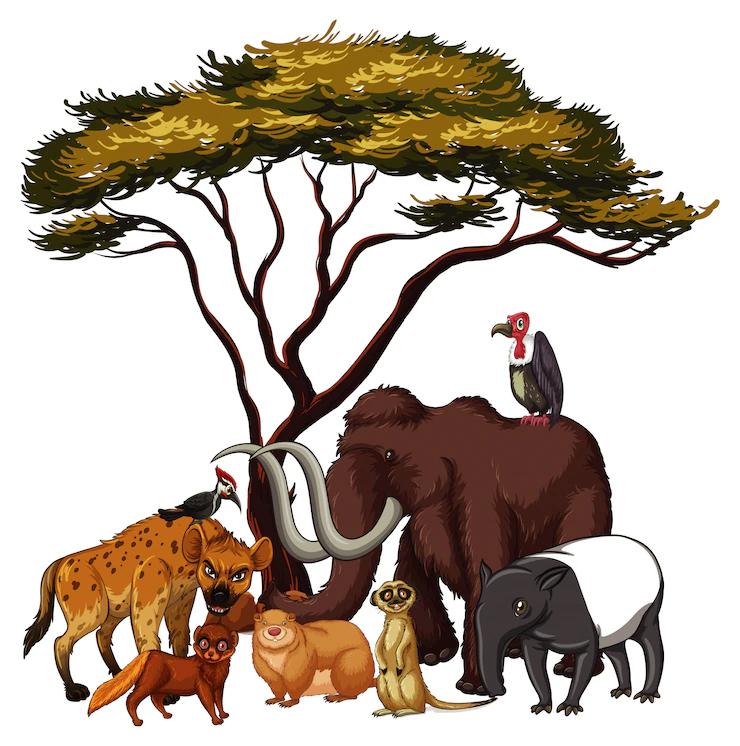
Once upon a time, in a dense forest, there lived an eagle named Eagi. He was known for his keen eyesight and swift hunting skills. One day, while flying high in the sky, Eagi noticed a group of animals gathered near a waterhole. Curious, he decided to investigate and as he flew closer, he saw that the group included an elephant, a lion, and a monkey.
The elephant, whose name was Ellie, was a kind and gentle creature. She was known for her wisdom and her ability to find food and water for the other animals in the forest. The lion, named Leo, was the leader of the group. He was strong and fierce, but also fair and just. The monkey, named Mike, was the jester of the group. He was always playing pranks and making the other animals laugh.
As Eagi landed near the waterhole, he noticed that the animals seemed to be in distress. He asked them what was wrong and Ellie explained that a severe drought had caused the waterhole to dry up, leaving them without a source of water. Eagi knew that he had to do something to help his friends. He spread his wings and took off into the sky.
Eagi flew high above the forest, searching for a new water source. After hours of searching, he finally spotted a river in the distance. Excited, he flew back to the waterhole and told the others about his discovery. The animals were overjoyed and immediately set out to find the river.
As they walked, they faced many challenges. The path was rocky and treacherous, and the sun was scorching hot. But they didn't give up. Leo, being the leader, kept them motivated and encouraged, Ellie with her wisdom helped them to find the way and Mike with his wit lightened the mood and kept them laughing.
Finally, after many hours of walking, they reached the river. The water was clear and cool, and the animals drank their fill. They were so grateful to Eagi for leading them to this new water source, and they knew that they would never have made it without his help.
From that day on, the animals of the forest worked together to survive and thrive. They shared the resources they had and helped each other through difficult times. They learned that by working together, they could accomplish anything. And they all lived happily ever after.
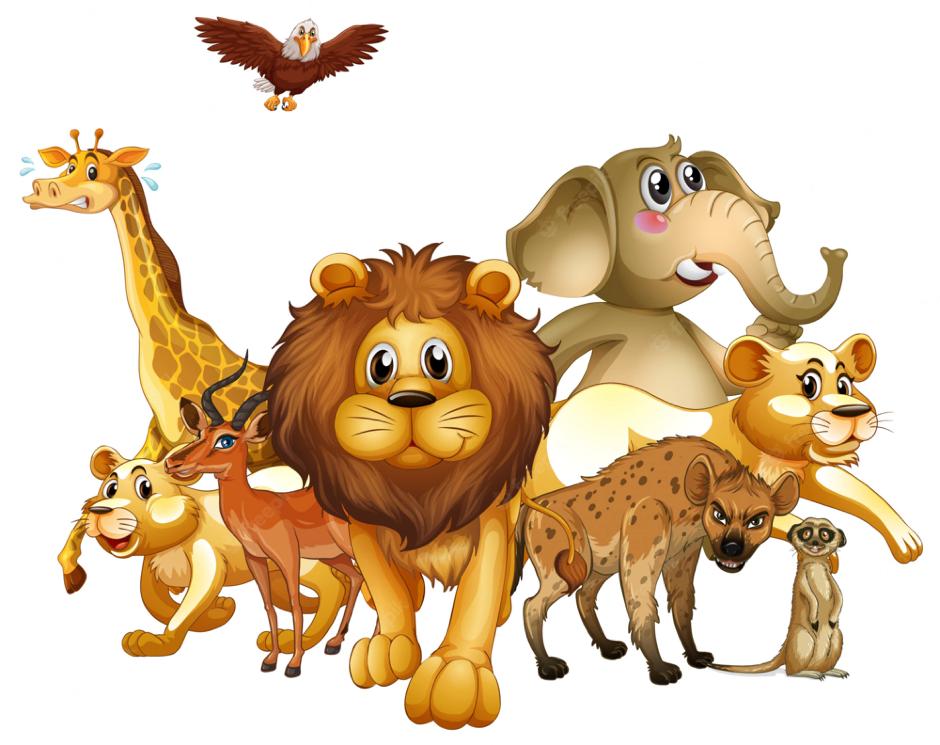
Dealing with a narcissistic teenager can be challenging, as they tend to have a strong sense of entitlement, an inflated sense of selfimportance, and a lack of empathy for others. However, it is important to remember that these behaviors are not necessarily the teenager's fault, as narcissistic traits can be caused by a variety of factors, including genetics, family dynamics, and environmental influences.

The first step in dealing with a narcissistic teenager is to understand the underlying causes of their behavior. It's important to have an open conversation with them and try to understand their perspective. This can help to build empathy and create a sense of understanding and connection.
Another important step is to set clear boundaries and expectations. Narcissistic individuals tend to push the limits and test the boundaries of those around them. It's important
to be firm and consistent in enforcing rules and consequences.
It's also important to teach them empathy and perspective-taking. Encourage them to think about how their actions might affect others, and to consider others' feelings and needs. This can help them to develop a sense of empathy and compassion, which can help to balance out their narcissistic traits.
It's also important to encourage healthy selfesteem. Narcissistic individuals often have a fragile sense of self-worth, and may be easily hurt or offended. Encourage them to focus on their strengths and accomplishments, and to take pride in their achievements.
It's important to avoid enabling or indulging their narcissistic behavior, as this can perpetuate the problem. Instead, it's important to hold them accountable for their actions, and to encourage them to take responsibility for their behavior.
It's also important to seek professional help if the behavior is causing problems in their daily life. A therapist or counselor can help the teenager to understand their behavior and develop strategies to manage it.
In conclusion, dealing with a narcissistic teenager can be challenging, but it is possible to manage their behavior with patience, understanding, and fi rm boundaries. By
understanding the underlying causes of their behavior, setting clear expectations, teaching empathy, encouraging healthy self-esteem, avoiding enabling, holding them accountable for their actions, and seeking professional help if needed. With the right approach and support, it is possible to help a narcissistic teenager to develop healthier relationships and a more balanced sense of self.

"Delicious Tuscan Salmon" is a recipe that may include ingredients such as salmon fillets, olive oil, garlic, tomatoes, lemon juice, and herbs such as basil and oregano. The salmon is typically pan-seared and then cooked with the other ingredients to create a flavorful dish. The exact recipe and method may vary depending on the source, but the dish is generally considered to be a tasty and healthy option.
Ingredients:
• 4 salmon fillets (about 6 oz each)
• 2 tbsp olive oil
• 2 cloves of garlic, minced
• 1 tsp dried thyme
• 1 tsp dried oregano
• 1/2 tsp red pepper flakes
• 1/4 tsp salt
• 1/4 tsp black pepper
• 1/4 cup dry white wine
• 1/4 cup chicken or vegetable broth
• 1 can of diced tomatoes (14.5 oz)
• 1/4 cup chopped fresh basil
• 1/4 cup chopped fresh parsley
Instructions:
2. In a small bowl, mix together the olive oil, garlic, thyme, oregano, red pepper flakes, salt, and black pepper.
3. Place the salmon fillets in a baking dish and brush the top of each fillet with the olive oil mixture.

4. In a skillet over medium-high heat, add the white wine, broth, and diced tomatoes. Bring the mixture to a simmer and cook for about 5 minutes, until slightly thickened.
5. Pour the tomato mixture over the salmon fillets in the baking dish.
6. Bake the salmon in the preheated oven for about 15-20 minutes, or until the fish is cooked through and the top is slightly browned.
7. Remove the salmon from the oven and sprinkle the top with chopped basil and parsley.
8. Serve the salmon hot, with the tomato sauce spooned over the top. This dish is best served with a side of pasta or crusty bread.
This Tuscan-inspired dish is packed with flavor and is sure to impress. The combination of herbs and spices in the marinade gives the salmon a delicious Mediterranean taste, while the tomato sauce adds a touch of acidity and sweetness. This recipe is easy to make and is a perfect dinner option for a weeknight or special occasion. Enjoy!

Why don’t cats like online shopping? They prefer a cat-alogue.
Riya, 4.5 Yrs, New Delhi
What do you call a cold dog? A chili dog.
Raman, 5 Yrs, Ranchi
Why was the equal sign so humble? Because it wasn’t greater than or less than anyone else.
Prachi, 7 Yrs., Indore
What do snowmen eat for breakfast?
Frosted Flakes.
Palak, 5 Yrs., Noida


What do you call a well dressed cat? A dandy lion.
Shaurya, 6.5 Yrs. G. Noida
What do you get when you combine an elephant with a fish? Swimming trunks.
Virat, 4.7 Yrs., Kanpur
Who won the skeleton contest? No body.
Naman, 6 Yrs., Faridabad
Why did the tree fail their exam? They got stumped on every question.
Jashu, 5.8Yrs., Kolkata
How do trees get on the internet? They log on.
Rahi, 6 Yrs., Delhi
Why did the farmer plant $100 bills? To make his soil rich.
Sonali, 7 Yrs., Pune
One of the best gifts you can give to your child is the love for reading. In due course of time if there’s one thing that I have realised is that when you read a lot, you know a lot, but the real benefits of reading goes beyond the knowledge of the subject. You become a better person. You become articulative and my personal favourite reason: you know how to tell how you are feeling.
The Book Bug is an effort by Dr Dad’s team to find out the best of best books for you. Our team comprises of authors, teachers, parents and children.
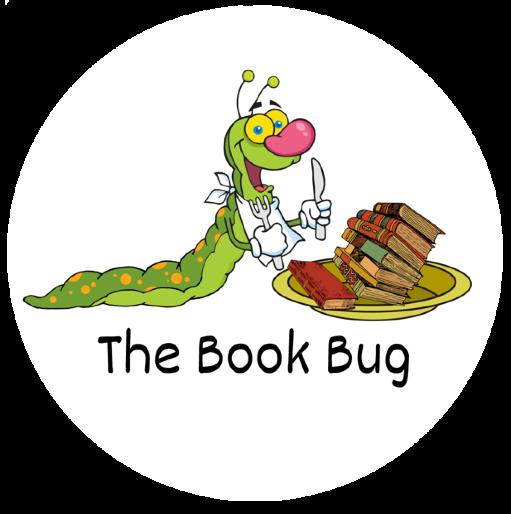
So, lets start with our this months list:
"The First 40 Days: The Essential Art of Nourishing the New Mother" by Heng Ou, Amely Greeven, and Marisa Belger.
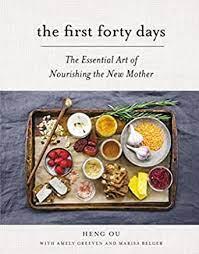
The book's cover image features a close-up of a woman's face with a serene expression and a fl oral headband. This book provides new mothers with practical and holistic postpartum care advice and rituals, including nutrition, self-care, and emotional support.
"What to Expect When You're Expecting" by Heidi Murkoff, Arlene Eisenberg and Sandee Hathaway.
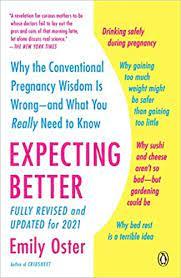
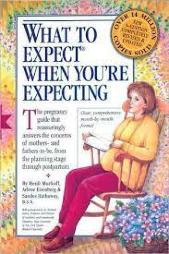
The cover image features a pregnant woman in a colorful dress and a background of watercolor illustrations. This book is considered a classic and comprehensive guide to pregnancy, providing information on everything from prenatal care and nutrition to childbirth and the first year of a baby's life.
"The Mama Natural Week-by-Week Guide to Pregnancy & Childbirth" by Genevieve Howland.
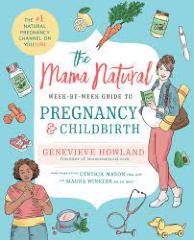
The book's cover image features a close-up of a mother holding her newborn baby, surrounded by fl owers. This book provides expectant mothers with a comprehensive guide to natural pregnancy and childbirth, including information on nutrition, exercise, and birthing options, as well as a week-by-week guide to the physical and emotional changes of pregnancy and childbirth.
"Expecting Better: Why the Conventional Pregnancy Wisdom Is Wrong and What You Really Need to Know" by Emily Oster.
The cover image features a pregnant woman holding a cup of coffee and a pencil. This book is based on the author's own experience and research, and is a data-driven exploration of the misconceptions and misperceptions surrounding pregnancy, offering the latest research and expert advice on everything from food and drink to sleep and exercise.
"The Very Hungry Caterpillar" by Eric Carle.
The cover image features a colorful illustration of a caterpillar eating through a variety of fruits. This classic picture book, fi rst published in 1969, follows the journey of a hungry caterpillar as it eats its way through an array of foods, teaching young children about counting, days of the week, and the life cycle of a butterfly.

The cover image features an illustration of a young boy with glasses and a lightningshaped scar on his forehead. This beloved fantasy series, featuring the young wizard Harry Potter and his friends at Hogwarts School of Witchcraft and Wizardry, has captured the imagination of readers of all ages since the first book was published in 1997.
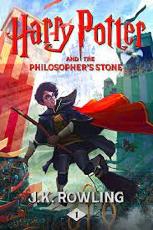
"To Kill a Mockingbird" by Harper Lee.
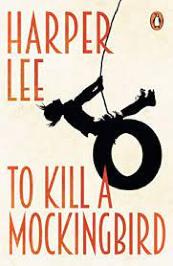
"Where the Wild Things Are" by Maurice Sendak.

The cover image features an illustration of a young boy in a wolf suit, surrounded by wild creatures. This beloved classic picture book, first published in 1963, tells the story of Max, a young boy who sails to an island inhabited by wild creatures and becomes their king, and has been delighting young readers and listeners for decades, it has a strong story and rich illustrations that captivate children's imagination.
"The Hunger Games" by Suzanne Collins.
The cover image features a girl with a bow and arrow, standing in front of a fi ery background. This popular dystopian young adult novel, first published in 2008, is set in a future North America where the government forces children to compete in a televised battle to the death, the story is fastpaced, action-packed and thought-provoking and has been praised for its strong female protagonist and its exploration of themes such as survival, sacri fi ce, and the corrupting nature of power.

The cover image features a tree with a tire swing hanging from a branch, with an illustration of a young girl sitting on the swing. This classic novel, first published in 1960, is set in the fi ctional town of Maycomb, Alabama and tells the story of Scout Finch and her brother Jem, and the racial injustice they witness in their community through the eyes of their father, Atticus Finch. It is a timeless story of prejudice and racism, and has been widely taught in schools and has won a Pulitzer Prize.
"The Fault in Our Stars" by John Green.
The cover image features an illustration of two paper stars, one with a tear drop. This young adult novel, published in 2012, tells the story of Hazel and Gus, two teenagers who meet at a cancer support group and fall in love. It is a poignant, funny, and honest story that deals with the big questions of life and death. It has been widely praised for its sensitive and realistic portrayal of teenage characters and has won several awards.

"Harry Potter and the Philosopher's Stone" by J.K. Rowling.

